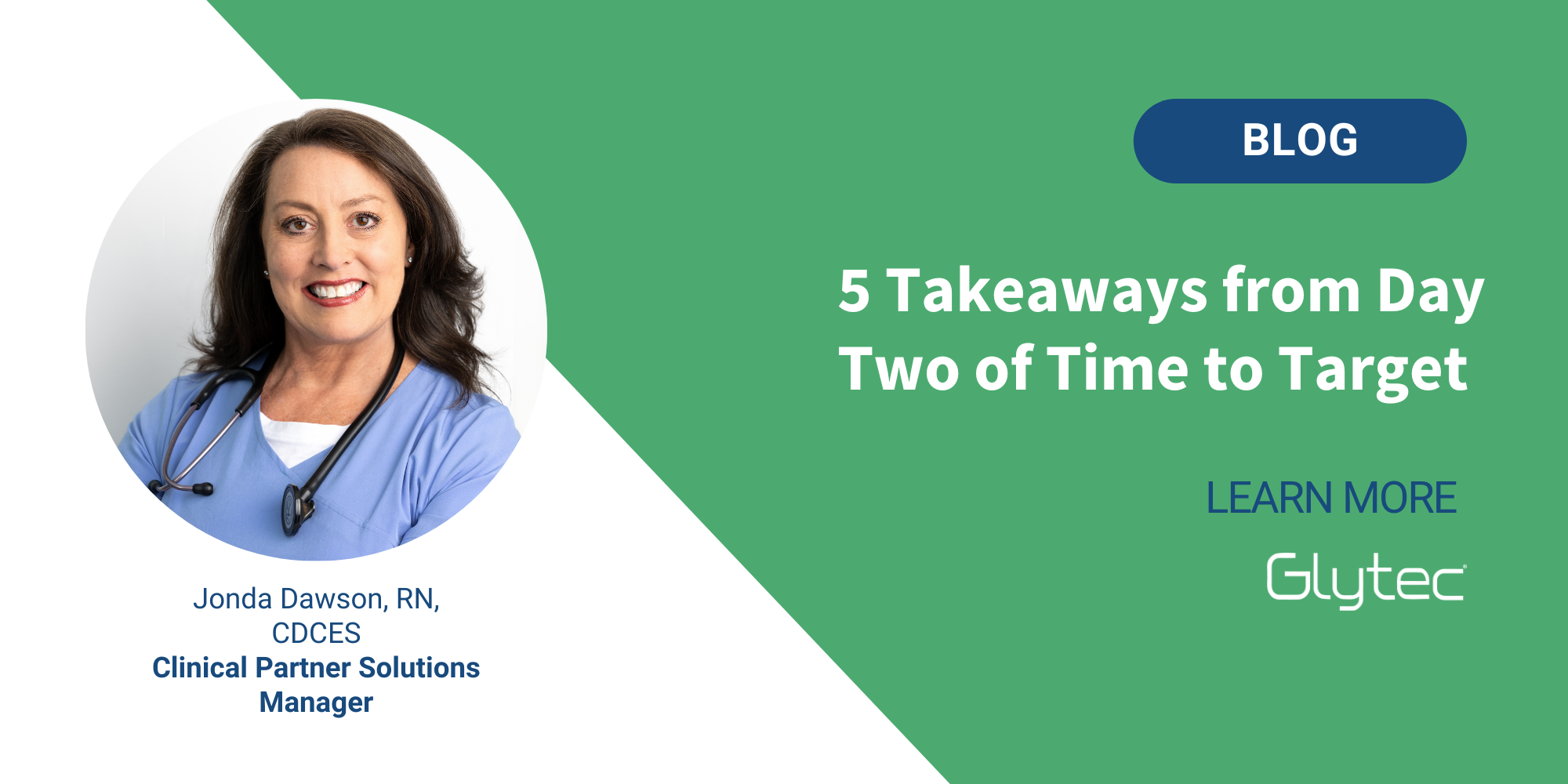During day two of Time to Target, Glytec’s annual conference on glycemic innovation and collaboration, industry experts discussed strategies to address today’s most pervasive glycemic management challenges and how health systems can best position themselves for the future. Similar to our recap from day one, here are the five key takeaways from the second day of the conference:
- Meal triad workflow is not one-size-fits-all. Despite a universal understanding of the best practice, every hospital has a different approach to meal triad workflows. Kerri Doucette, senior clinical customer success manager at Glytec, explored how each facility faces unique challenges, like inconsistent timing of meal consumption, and how they often require varying solutions to mitigate events of dysglycemia. Kerri emphasized that a safe and effective meal triad requires a team effort between a wide range of stakeholders, including dietary, nutrition and clinical staff, to discuss topics like tray delivery, carbohydrate consumption and mealtime dosing.
- Postoperative patient glycemic management is critical to maintaining target blood glucose values. Hyperglycemia is a common occurrence in the inpatient setting, affecting more than 30% of hospitalized patients and up to 40% of surgical patients. Betsy Kubacka, vice president of clinical partner solutions at Glytec, detailed the criticality of maintaining blood glucose levels of less than 180mg/dL. Betsy explained that when postoperative levels exceed the target range, patients become more susceptible to surgical site infections, delayed wound healing, increased length of stay and even mortality.
- Pharmacists are uniquely positioned to lead glycemic management practice improvements. Pharmacists play an integral role in glycemic management efforts and in reducing hospital harm through safe and effective insulin administration. Their level of expertise around insulin and medication safety practices uniquely positions them to lead efforts in improving overall clinical knowledge and glycemic management practices. Stephanie Mason, diabetes clinical pharmacist at Glytec, highlighted the dangers of improper insulin dosing, including that out of 40 high-risk medications, IV insulin ranks No. 1 and SubQ insulin is No. 9. Jennifer Clements, clinical professor and director of pharmacy education, University of South Carolina College of Pharmacy, echoed these findings, emphasizing the importance of process improvement and how a lack of standardization can lead to adverse glycemic events. Marina Rabinovich, critical care clinical pharmacy specialist, Grady Health System, went on to describe ways in which the successful implementation and integration of technology can be vital to optimizing insulin safety and patient care. Marina reviewed how safety guardrails built into Glucommander™ can prevent hypoglycemia and reduce time to target with IV insulin therapy. Watch this session here.
- Technology is a tool, not a strategy. Technology has and will continue to have an outsized impact on glycemic management and patient care. Dr. Joseph Aloi, section chief endocrinology, Atrium Health Wake Forest Baptist, Dr. Bruce Bode president and CEO, Atlanta Diabetes Associates, Dr. David Klonoff clinical professor of medicine, USCF and Dr. Francisco Pasquel, associate professor of medicine, Emory University explored several topics ranging from Continuous Glucose Monitors (CGM) and telehealth data in the hospital setting to personalized glycemic management insulin software. The doctors described how technology can help safely manage patients remotely, how Glucommander IV enables clinicians to support patients with complex needs, and why a clearly defined approach to data is the key to improving care.
- CMS measures are a critical step forward for patient safety. The Centers for Medicare & Medicaid Services (CMS) measures are a monumental step forward for inpatient glycemic management, but they are not a silver bullet for hospitals. Dr. Curtiss Cook, professor of medicine, Mayo Clinic Alix School of Medicine, highlighted the importance of asking thoughtful questions to ensure you have the right metrics in place. He also reminded attendees there is not a clearly defined national standard for hospitals to gauge glycemic success and that beyond benchmarks, applied glucometrics are necessary to drive change by helping identify patterns and overcome clinical inertia.
It’s clear now more than ever that it is time for teams to embrace technology, adopt best practices and empower teams to enact collaborative glycemic change.
To learn more about how Glytec supports the rapidly evolving inpatient glycemic management landscape, visit our eGlycemic Management System overview page here.
For more Time to Target content, including on-demand presentations, visit glytectimetotarget.com.

